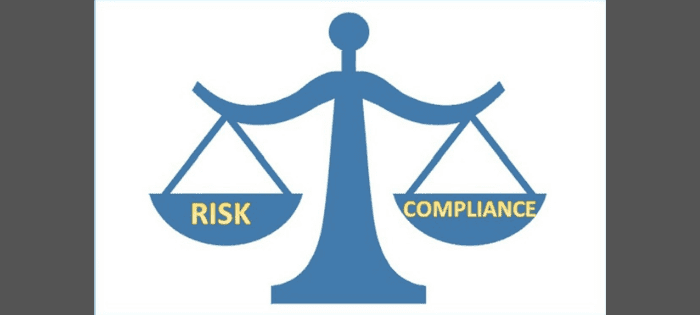
Environment / Food Safety / Quality / Safety
Comments: No Comments
Compliance risk assessment helps to identify and assess risks related to applicable regulatory requirements. Internal and external events or conditions affecting the entity’s ability to achieve objectives must be identified, distinguishing between risks and opportunities. These risks are analyzed, considering the following:
- Size of the risk – where, how big, how often/many?
- Severity of the outcome – to what extent can it impact safety, environmental, operational, financial, customer relations, regulatory compliance?
- Likelihood/probability of each risk – how likely is the occurrence of a negative outcome, considering the maturity of existing controls?
Based on this assessment, management can prioritize risks, select appropriate risk responses (avoiding, accepting, reducing, sharing), and develop a set of actions to align with the entity’s risk tolerance/appetite. An acceptable level of residual risk is considered after selected improvements and controls are applied. From there, policies and procedures can be established and implemented to help ensure the risk responses are effectively communicated so operating managers and individuals can carry out their responsibilities.
A deeper dive compliance program assessment may be performed for those risks that are identified as the company’s most significant.
Compliance Program Assessment
A compliance program assessment looks beyond “point-in-time” compliance to critically evaluate how the company manages compliance programs, processes, and activities, with compliance assurance as the ultimate goal. Capability, capacity, programs, and processes to comply are examined as part of this review. Conducting routine process and compliance audits are also key components of a compliance assurance program.
Compliance program assessment should follow a disciplined and consistent process, resulting in an effective program that guides alignment of activities to an integrated management system for sustained compliance and continuous improvement. An essential part of the assessment, audits capture regulatory compliance status, management system conformance, adequacy of internal controls, potential risks, and best practices.
Compliance program assessment enables a company to define and understand:
- Compliance requirements and where regulated activities occur throughout the organization
- Current company programs and processes used to manage those activities and the associated level of program/process maturity
- Deficiencies in compliance program management and opportunities for improvement
- How to feed review recommendations back into elements of the management system to create a roadmap for sustaining and continually improving compliance
There are six phases associated with a compliance program assessment:
Phase 1 – Regulations, Requirements, and Applicability Analysis: Phase 1 focuses on identifying, organizing, validating, and understanding all of the requirements (legal or other) with which the company must comply. It provides an applicability analysis of the requirements to company operations by functional area and evaluates the associated risks. This stage engages representatives across the company who are responsible for activities subject to the requirements.
Phase 2 – Activities Analysis: This phase involves developing an inventory/profile of all company activities that may trigger the requirements identified in Phase 1. It asks the question, “What activities does the company carry out that are covered by the requirements?”
Phase 3 – Desired Compliance Program Standard: Establishing the company’s expectations for compliance program processes and controls—the desired condition—is essential. This “to-be” standard integrates management system principles into compliance program management. Programs should examine relative risks and ensure that risk-based priorities are being set.
Phase 4 – Actual Compliance Program Condition: In contrast to the desired standard identified in Phase 3, Phase 4 is about describing the company’s current compliance program. It defines how the company performs the activities outlined in Phase 3 (along with who, when, and where)—the “as-is” condition. This is done in the same framework as the desired standard in order to compare them in the next phase.
Phase 5 – Gap Analysis: The gap analysis compares actual compliance program management against the desired standard. It evaluates compliance program management processes, controls, and maturity to determine if they are good as is, need improvement, or are missing. These gaps and opportunities provide the basis for the improvement actions developed in Phase 6.
Phase 6 – Improvement Actions: Phase 6 moves the process along to developing action plans and an approach for ongoing management review that will guide the compliance program development and improvement activities. Compliance program management review is established at the end of this last phase. If there is a management system in place, program review information and action plan tracking can be integrated into that management system.
Outcomes
As a whole, this process will help companies evaluate the degree to which:
- Compliance goals and objectives are set and communicated by management.
- Hazards and risks are identified, sized, and assessed, including an inventory of activities subject to the compliance requirements and the relative risks.
- Existing controls are adequate and effective, recognizing, and addressing changed conditions.
- Plans are in place to address risks not adequately covered by existing controls.
- Plans and controls are resourced and implemented.
- Controls are documented and operationalized across functions and work units.
- Personnel know and understand the controls and expectations, and are engaged in their design and improvement.
- Controls are being monitored with appropriate metrics and compliance auditing and assurance.
- Information system is sufficient to support management system-required functions (e.g., document management and control, action tracking, notifications, training tracking, task calendaring, metrics reporting). Information dashboards can be used for reports to management.
- Deficiencies are being addressed by corrective/preventive action and are being tracked to completion.
- Processes, controls, and performance are being reviewed by management for ongoing improvement, including the maintenance and continual improvement of the integrated management system.
